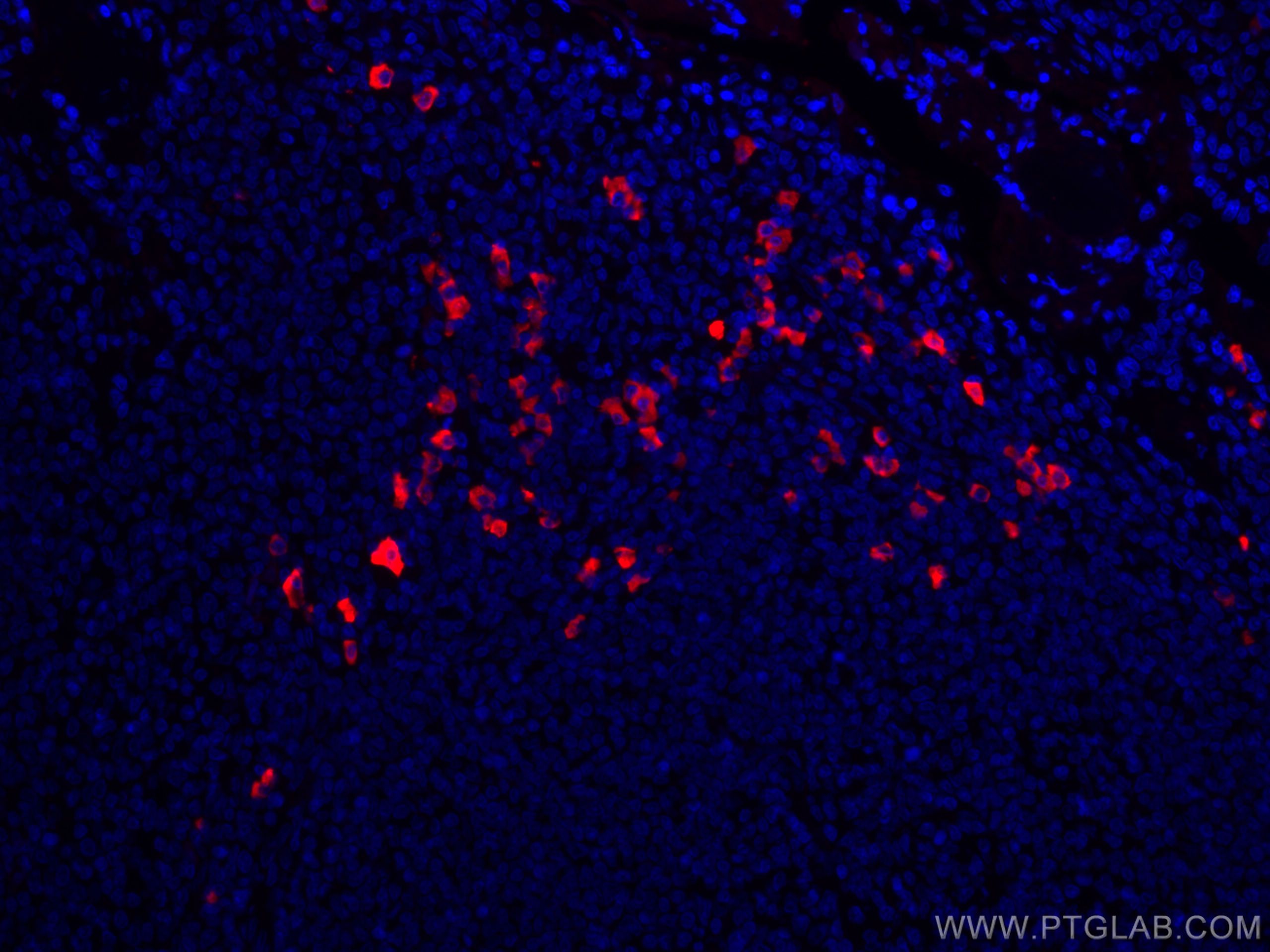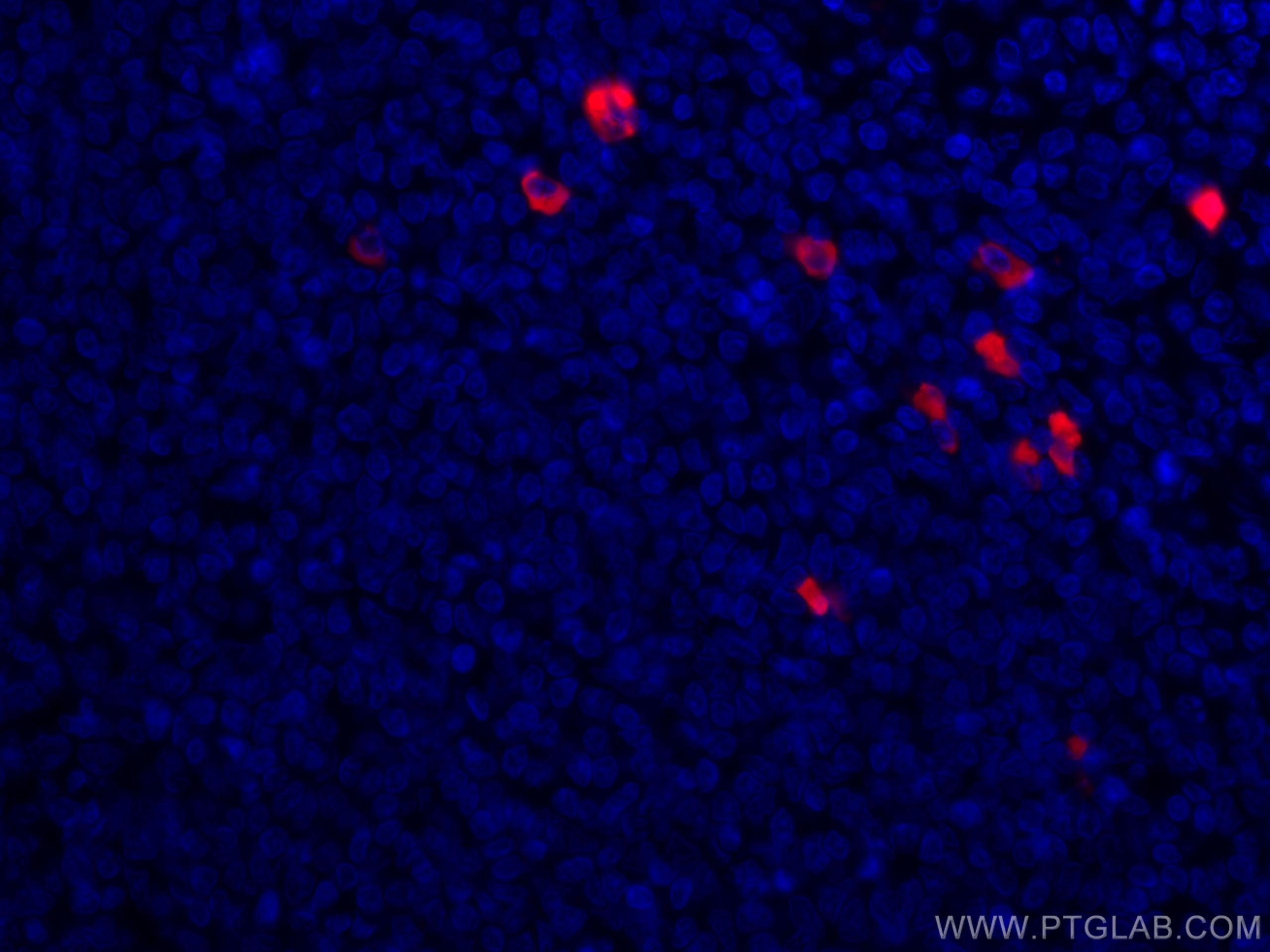Validation Data Gallery
Tested Applications
| Positive IF-P detected in | human tonsillitis tissue |
Recommended dilution
| Application | Dilution |
|---|---|
| Immunofluorescence (IF)-P | IF-P : 1:50-1:500 |
| It is recommended that this reagent should be titrated in each testing system to obtain optimal results. | |
| Sample-dependent, Check data in validation data gallery. | |
Product Information
CL594-60099 targets Human IgA in IF-P applications and shows reactivity with human samples.
| Tested Reactivity | human |
| Host / Isotype | Mouse / IgG1 |
| Class | Monoclonal |
| Type | Antibody |
| Immunogen |
CatNo: Ag7417 Product name: Recombinant human IgA protein Source: e coli.-derived, PET28a Tag: 6*His Domain: 4-353 aa of BC016369 Sequence: TSPKVFPLSLCSTQPDGNVVIACLVQGFFPQEPLSVTWSESGQGVTARNFPPSQDASGDLYTTSSQLTLPATQCLAGKSVTCHVKHYTNPSQDVTVPCPVPSTPPTPSPSTPPTPSPSCCHPRLSLHRPALEDLLLGSEANLTCTLTGLRDASGVTFTWTPSSGKSAVQGPPERDLCGCYSVSSVLPGCAEPWNHGKTFTCTAAYPESKTPLTATLSKSGNTFRPEVHLLPPPSEELALNELVTLTCLARGFSPKDVLVRWLQGSQELPREKYLTWASRQEPSQGTTTFAVTSILRVAAEDWKKGDTFSCMVGHEALPLAFTQKTIDRLAGKPTHVNVSVVMAEVDGTCY 相同性解析による交差性が予測される生物種 |
| Full Name | immunoglobulin heavy constant alpha 1 |
| Calculated molecular weight | 496 aa, 53 kDa |
| Observed molecular weight | 55-60 kDa |
| GenBank accession number | BC016369 |
| Gene Symbol | Human IgA Heavy Chain |
| Gene ID (NCBI) | 3493 |
| RRID | AB_2883423 |
| Conjugate | CoraLite®594 Fluorescent Dye |
| Excitation/Emission maxima wavelengths | 588 nm / 604 nm |
| Form | |
| Form | Liquid |
| Purification Method | Protein G purification |
| Storage Buffer | PBS with 50% glycerol, 0.05% Proclin300, 0.5% BSA{{ptg:BufferTemp}}7.3 |
| Storage Conditions | Store at -20°C. Avoid exposure to light. Stable for one year after shipment. Aliquoting is unnecessary for -20oC storage. |
Background Information
Ig alpha is the major immunoglobulin class in body secretions. It may serve both to defend against local infection and to prevent access of foreign antigens to the general immunologic system. This antibody recognizes the Chain C region of human Ig alpha-1 (IGHA1).
Protocols
| Product Specific Protocols | |
|---|---|
| IF protocol for CL594 Human IgA antibody CL594-60099 | Download protocol |
| Standard Protocols | |
|---|---|
| Click here to view our Standard Protocols |


